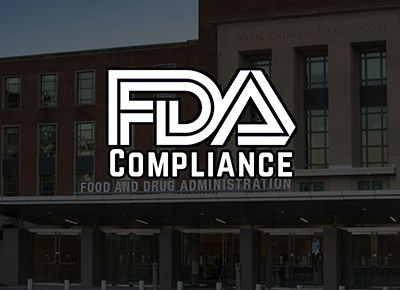The US FDA QMSR Transition - 21 CFR 820 And ISO 13485
🎤 John E. Lincoln | 📅 April 30, 2024 | 🕒 11 AM Eastern Time US
Description:
The US FDA, after years of discussing the harmonization of 21 CFR 820, Device CGMPs (QSR), to the ISO 13485, Device QUS, has finally moved closer to implementation. On February 22, 2022, they published a draft regulation that harmonizes 21 CFR 820 with ISO 13485:2016, called the Quality Management System Regulation (QMSR).
The FDA has been working to align its QSR with the worldwide quality systems standard ISO 13485. Part of the reason for harmonizing its regulations with ISO 13485 is to reduce the regulatory burden for device makers who sell product in both the US and in EU / Asia, by eliminating redundancies involved in complying with both the ISO and QSR standards. After years of reviews, the Agency has “determined that the requirements in ISO 13485 are, when taken in totality, substantially similar to the requirements of the current Part 820, providing a similar level of assurance in a firm’s quality management system and ability to consistently manufacture devices that are safe and effective and otherwise in compliance with the FD&C Act.” They base this decision on their participation in the Medical Device Single Audit Program (MDSAP), as well as a previous audit report pilot program in which the Agency accepted manufacturers' audit reports based on ISO 13485 (-:2003). FDA agrees that ISO 13485 represents a more modern QMS approach and “has greater integration of risk management activities and stronger ties to ISO 14971, the risk management standard for medical devices". The FDA proposes to give manufacturers one year from the publication of the final rule to adapt to the new regulatory requirements.
Areas Covered in the Session :
- Introduction to the QMSR
- "Incorporation by reference" ISO 13485
- The new 21 CFR 820
- Key Changes
- Major Areas of Emphasis over ISO 13485
- Incorporation of risk management throughout the quality system based on ISO 14971
- Phase-in period
Who Should Attend:
- Senior management in Devices, Combination Products
- Quality Assurance Departments
- Regulatory Affairs Departments
- Research and Development Departments
- Manufacturing Departments
- Engineering Departments
- Operations Departments
- Production Departments
- Medical Device product development teams
- Consultants; others tasked with device QA, product development, manufacturing, process / product / data analysis, regulatory submission responsibilities


